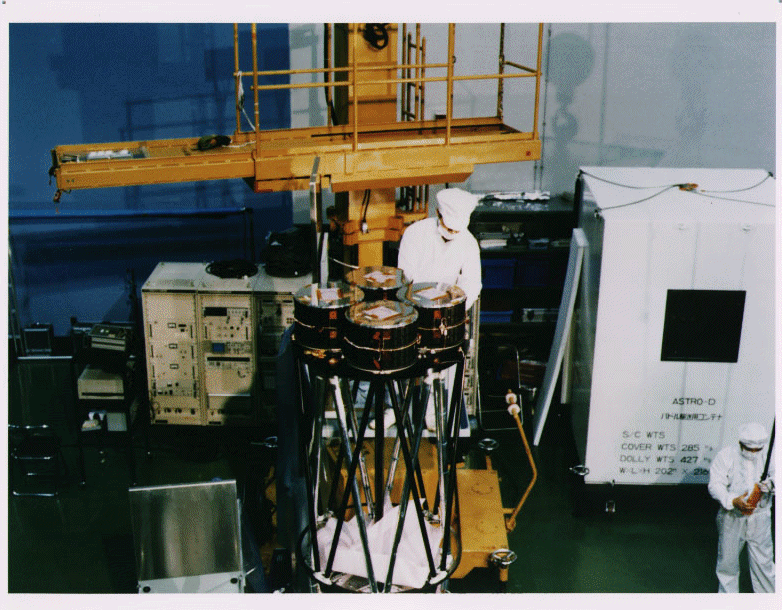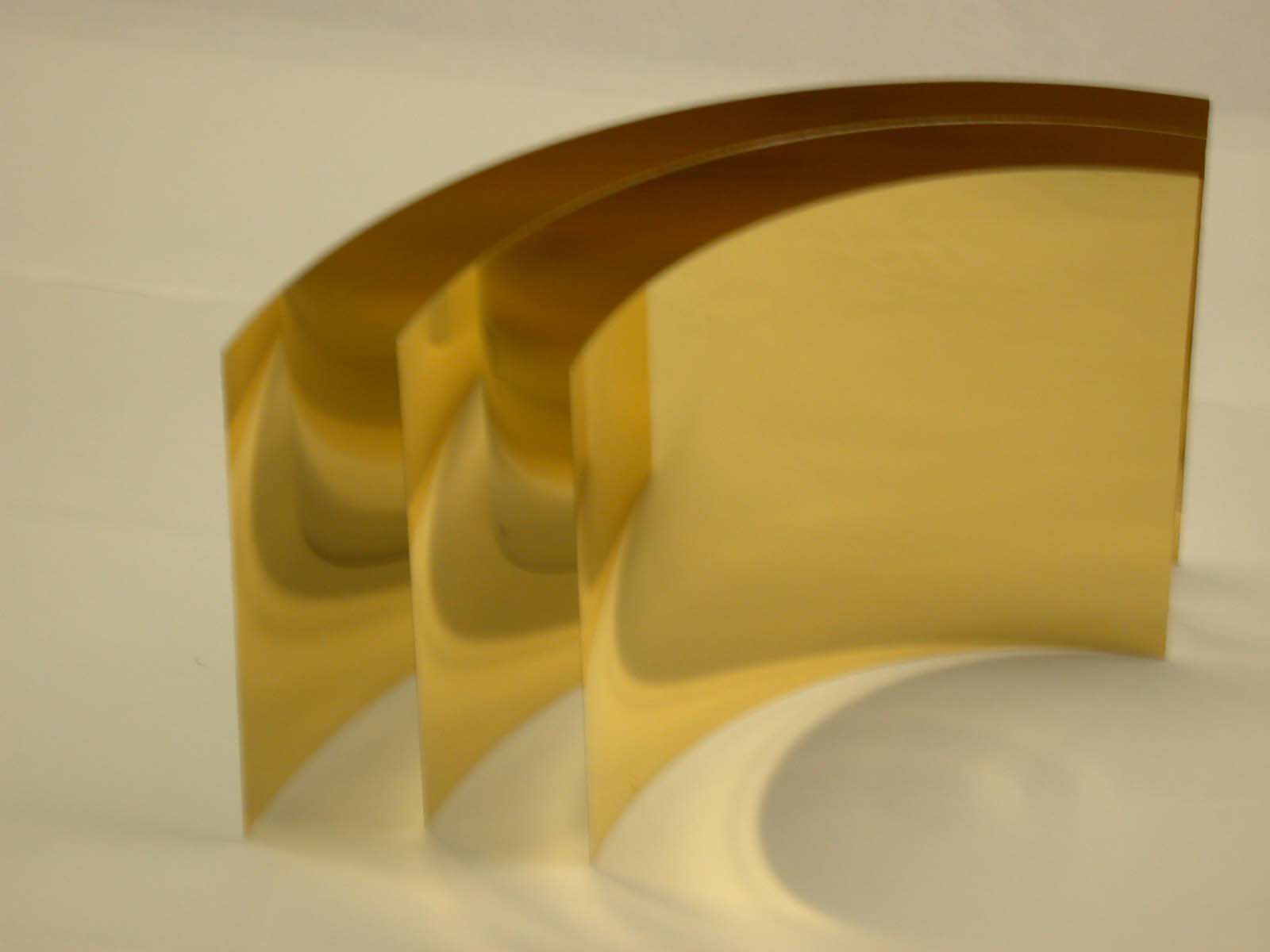X-RAY MIRRORS
PAST AND PRESENT PROJECTS AT
THE MIRROR LABORATORY
Significant past projects include the project BBXRT where pioneering work
on X-ray foil optics was done. BBXRT was flown in 1990 on broad space
shuttle Columbia . It first demonstrated the potential for
foil optics and opened a new direction for astronomical X-ray imaging.
This is followed by ASCA, formerly named Astro-D. ASCA was launched
in 1993 from Japan and re-enter the atmosphere in 2001. The project,
Suzaku ,
involved 5 telescopes with extensive nesting of foils. These telescopes
used the same principle of X-ray foil optics working at grazing incidence,
but with a different fabrication technique than the previous missions.
The new technique of epoxy-replication of metallic surface gives
a much smoother surfaces, less scattering, and hence a better angular
response than the telescopes in the aforementioned previous missions.
Project BBXRT: Broad Band X-Ray Telescope
BBXRT,
a US Space Shuttle mission flown in December of 1990, was the
pioneer X-ray astronomy experiment, using thin foil mirrors, to observe
the X-ray sky with telescopes effective over a
broad energy band at moderate angular resolution.
BBXRT consists of two aligned segment that focus X-rays by reflection
at grazing angles of incidence. The X-rays are focused on solid state detectors
that are cooled to a temperature of about 100 K.
For BBXRT, nested thin foil mirrors
were constructed from thin aluminum foil reflectors made of high luster
commercial aluminum. Foil segments were first formed into conical
reflectors which were then coated with acrylic lacquer for increased
smoothness. This was then followed by approximately 500 Angstroms of
vacuum deposited gold for enhanced reflectivity in the X-ray band. Two
BBXRT telescopes, each of which was 40 cm in diameter and with 377 cm
focal length, had an effective area of 450 cm2 at 1 keV and
180 cm2 at
7 keV. The mirror weight of the two telescopes was 40 kg.
Project ASCA: Advanced Satellite for Cosmology
and Astrophysics
The
ASCA
satellite was launched in February 1993. It was known before launch as Astro-D.
It is the fourth Japanese X-ray mission and was developed in collaboration
between the USA and Japan. The four
ASCA X-Ray Telescopes were improved versions
of the BBXRT design with particular emphasis on the high energy efficiency
and ultra light weight. The combined effective area exceeds 1200 cm2 and
600 cm2 at 1.5 keV and 7 keV, respectively. The total weight (including
thermal sheilds) of four mirrors was less than 40 kg.

ASCA XRT Design Parameters
| Mirror Parameters |
Design values |
| Mirror Substrate |
127 um aluminum foil |
| Mirror surface |
Acrylic lacquer 10 um |
| with 500 A Au |
| Mirror length |
100 mm |
| Mirror number |
120 foils |
| Outer diameter |
345 mm |
| Inner diameter |
120 mm |
| Focal length |
3500 mm |
| Incident angles |
0.24-0.70 degree |
| Number of telescopes |
4 |
| Mirror Weight (4 telescopes) |
39.340 kg |
| Geometrical area |
2232 cm2 |
| Field of View |
24' (1 keV) |
| 16' (7 keV) |
Project Astro-E & Suzaku (Astro-E2)
Astro-E is an X-ray imaging mission with a similar concepts as ASCA.
As part of the Japan-US collaboration, the X-Ray Mirror Group at Goddard
was responsible for the research and production of all its X-ray telescopes.
There were 5 telescopes for the
Astro-E
project. Four of them had X-ray charged couple devices as detectors
at a focal distance of 4.75m; while one had an X-ray micro-calorimeter
positioned at a focal distance of 4.5m. Each of these telescopes has
168-176 nestings of cylindrical foils, produced in quadrants.
Nearly 10,000 foil-reflectors were made for this project.
The processes involved the shaping and heat-forminig of foils, coating and
replication of surfaces, optical and X-ray testing of individual foils, and
assembly and testing of the telescopes. All these were done in-house.

In a
two stage design of an X-ray telescope ,
X-rays are reflected off two surfaces consecutively
at grazing angles. Instead of the Wolter Type parabolic-hyperbolic surfaces,
the Astro-E mirrors used a much simpler approximation of conical surfaces. This
simplication made a straightforward replication process but limits the resulting
resolution of the telescope. The use of thin foil, however, allows an much
more extensive nesting of reflecting surfaces.
The five mirrors were delivered to ISAS, Japan, were successfully integragted.
However, the launch in February, 2000, did not successfully put the instrument
in orbit. The project Astro-E2, hence renamed Suzaku
is a replacement of the original mission. The
design parameters are nearly the same, but with the addition of, for
each telescope, a pre-collomator stage, which was designed and made at
Japan's JAXA/ISAS. It was successfully placed in orbit in 2005.
|